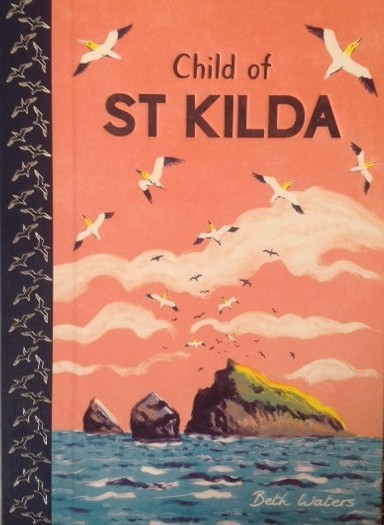Inspiring Young Readers
 posted on 07 Aug 2019
posted on 07 Aug 2019
Child of St Kilda by Beth Waters
This stunningly evocative picture book from Beth Waters, recently published by Child’s Play, takes my award for the most beautifully curated children's book I’ve seen so far this year ( and it’s been a good year too, so the bar is a high one). To talk about it as one book is to do it a disservice because it’s really several different books in one – a history lesson; a geographical, wildlife and environmental tour; a respectful biography; and, perhaps above all, a love letter to one of Britain’s most remote and beautiful places with a unique character all its own.
It would also be a mistake to think that this is a book only for younger readers – it is in my view a work of art that all ages will love. I certainly learned a lot from reading the book and even if I’d know more about the subject, the art alone would have made the reading worthwhile.
The lavish foolscap, hardback production showcases Waters’ eye for colour and design and a useful note at the end of the book tells us that the images on the page were created ‘by hand using printmaking techniques’ which she explains in more detail. The use of monoprinting and the precision needed for that task is impressive but not nearly as thrilling as the end results which are really lovely.
Waters has chosen to tell us about the history of St Kilda – perhaps Britain’s most remote northerly island group - through the mechanism of a biography of Norman John Gilles, one of the last children to leave the island at the age of five in 1930 when the population fell below a sustainable level of subsistence.
We get introduced to the wildlife of the islands, the birds and the flora and we’re shown how the small population of St Kilda managed a harsh but largely harmonious community-led existence. But the story isn’t sugar-coated – it’s a tough, unforgiving place to live and genuinely elemental.
At the turn of the 20th century access from the mainland to the islands became easier and for a while St Kilda was a tourist destination of sorts. But, of course, that in itself is a double-sided coin because if it’s easier to get there its also easier to leave and that’s exactly what started to happen as people went off in search of an easier life. When the island was eventually evacuated, as you might expect, there were those who flourished and those who never quite adjusted to the change of location. It seems that Norman John fell into the former category and, towards the end of the book, Waters provides us with a pen portrait of how his life shaped up in the following years. He settled in Suffolk and married, lived to a ripe old age and was able to return to his beloved islands on several occasions with his family.
The islands became a World Heritage Site and is now looked after by the National Trust for Scotland where it hosts volunteers who spend time there looking after buildings and recording wildlife.
The last few pages of the book are an added bonus because Waters has included for us some examples of her ‘St Kilda Sketchbook’ which consists of drawings she made on the islands in June 2017.
What a satisfying feast of a book this is. You really must get your hands on a copy.
Terry Potter
August 2019
(Click on any image below to view them in a slide show format)






(images http://www.bethwaters.co.uk/child-of-st-kilda.html )